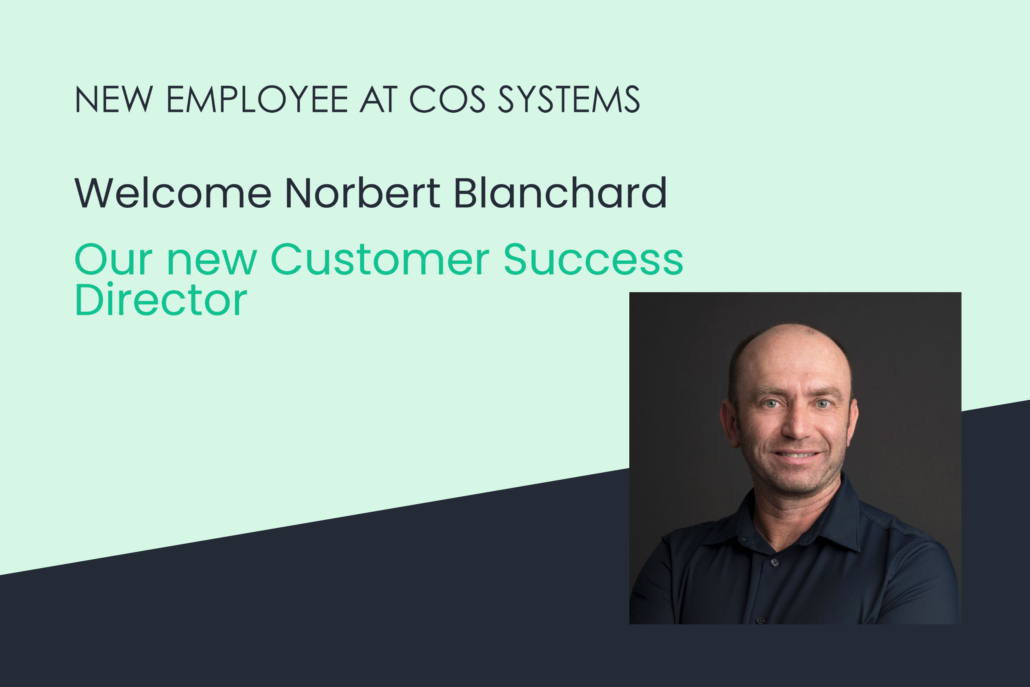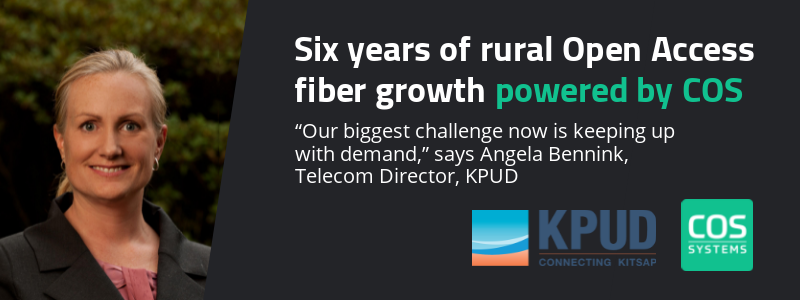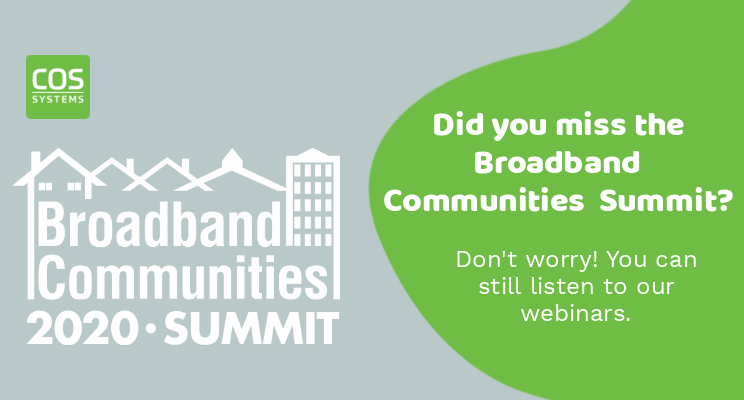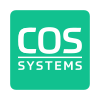COS Systems, SNG, and Valo Publish Joint White Paper on Options to Bridge Broadband Gaps


November 9th, 2023, Umeå Sweden — Strategic Networks Group (SNG), Valo, and COS Systems today announced that they have published a white paper exploring the challenges that bridging broadband gaps in unserved and underserved areas entails, as well as presenting possible approaches to address them.
This whitepaper explores the challenges faced by localities (communities, regions, etc.) and presents four potential options to address their broadband gaps: do nothing, subsidize an ISP, become an ISP, or develop a digital infrastructure public-private partnership.
After thorough evaluation, the digital infrastructure public-private partnership (PPP) approach emerges as the most recommended solution because it leverages the strengths of both public and private sectors to ensure affordable broadband access is available to all.
The release of the white paper “Leaving No One Behind in an Increasingly Digital World–Options for Unserved and Underserved Areas to Bridge Broadband Gaps” is the outcome of a long partnership between SNG, COS, and Valo to enable stewardship of localities’ digital future that is sustainable, inclusive, and cost-effective.
Ensuring that no one in your locality is left behind in an increasingly digital world means that everybody can access reliable and affordable high-speed internet. This broadband connectivity has become an essential infrastructure for localities. However, there are still areas where broadband services are non-existent (unserved) or inadequate (underserved).
This joint whitepaper compares the various options available to localities seeking to bridge their broadband gaps and ensure equitable access to digital opportunities. Recognizing that a one-size-fits-all solution does not exist, the paper analyzes the advantages and drawbacks of each proposed option to help decision-makers make better-informed choices about their locality’s digital future.
“We are delighted to jointly announce this white paper highlighting different options to solve broadband gaps,” said Mikael Curri, founder and President of SNG. “We will continue to work with localities and the private sector to build a sustainable broadband and digital inclusion ecosystem.”

About Strategic Networks Group
If you want to learn more about digital infrastructure, public-private partnerships, digital inclusion, and how to get started, reach out to us at www.sngroup.com

About Valo
For more information on what it takes to set up, operate, or commercialize digital infrastructure, don’t hesitate to reach out to us at www.valonetworks.com

About COS Systems
COS Systems delivers cloud-hosted software to plan, build, and manage broadband networks globally. COS Business Engine is a proven network management solution (BSS/OSS) supporting traditional ISPs and Open Access networks.
Our latest update in COS Business Engine makes it easier to track the progress in your network. How large is the demand for buildout in a specific area? Compare different areas in our new area page, both as a sortable list and in a map where areas can be shown color coded depending on their current phase or with a gradient indicating their take rate. Show the distribution of individual surveys or signups within an area. Is demand heavier in the northern part than in the southern? Just split the area in half and start connecting the northern part while you continue to gather interest in the southern part.
Areas can be added as a layer in all maps, your imagination the only limit.

After spending time away from us and doing something even more meaningful (being a full-time dad of three), Spencer has finally returned to the office and is ready to put his mind to and focus on how to connect the unconnected.
In order to write this piece, I’ve asked several colleagues what Spencer’s actual title is and what he’s especially good at. The answer won’t surprise those who know him but it seems from Sales to Customer Support and Business Development, he can do it all and he does it well! He might even be able to build the trenches to bury fiber conduits but I’m not sure….
So welcome back to the office Spencer!
How long have you been gone?
Spencer: About seven-eight months.
What’s your title?
Spencer: [Laughter] I’m not sure….*
What did you miss the most about working at COS?
Spencer: Warm coffee, the contact with our client’s and Ander’s jokes.
What are you especially looking forward to?
Spencer: Meeting new colleagues*, COFFEE!, playing padel, hearing about new customers and other COS updates.
*Like me, yey
You’ve been working at COS Systems for almost six years, what do you think we’re best at?
Spencer: We’re not only a great group of hard-working passionate colleagues but we also know how to have fun together when we are not working- Fika, Padel, some beers, etc.
I agree, thanks for taking the time to chat Spencer – now let’s get some coffee!
If you want to know more about Spencer or (re)connect with him to talk about your fiber projects and needs, don’t hesitate to reach out.
*Note: Since our interview, Spencer has been promoted to Head of Technical Sales Support, congratulations!

Norbert will join forces with our sales team and ensure that our customers are well taken care of and get their voices heard. Born and raised in France, he has been living in the US for 22 years and is today based in San Francisco, California. From there, he will further strengthen our presence in the US, making it even easier to provide that little extra for our North American customers. Aside from helping our customers to get to know our system as well as possible, he will make sure their feedback is used to make our products even better.
Norbert added a creative touch to his background in engineering and on top of his master’s degrees in Telecom and Business Unit Management, studying Liberal Arts in Madrid. He has worldwide experience in the telecom and IT industries, working for global equipment suppliers and operators in large corporations and start-ups. He has worked in consulting, sales and operations, and managed relationships with government representatives, enterprises, and strategic partners.
Norbert shares our passion for Open Access and has worked as an Operations Director for Covage, an open access network operator in France and Spain.
To name just a few more of his former positions, he has worked as Services Director for Huawei in France, and before that, held a position as Business Development Manager for Interwave, a Silicon Valley start-up selling wireless solutions in Latin America and Asia.
Before joining our team, Norbert has been working as a Consulting Director/Account Manager, covering the US and Canada, for a software company that develops web-based work management software.
Aside from Norbert’s professional background, San Francisco bay is his playground and he has already invited the team on a trip on his new sailing boat. Other than that, he is a fan of the golden state warriors who just won the 2022 NBA Championship!
“Norbert has a unique combination of an international telecom background and being one of few in the USA with extensive Open Access Network operations experience. As we now see a wave of new Open Access operators starting up in North America, and choosing our platform for their operations, there is no doubt Norbert will be of great value for our growing team and customer base,” says Isak Finér, COS Systems CRO.
Click here to connect with Norbert

Now is the time for communities to invest in broadband infrastructure to improve citizens’ quality of life and promote economic prosperity. When opportunities arise, will your organization be ready? States, municipalities, community organizations, Tribal governments, and community groups must strategize NOW if they intend to get their proposed projects “shovel-ready” for deep, detailed applications and, ultimately, funding.
That’s why NoaNet is hosting these upcoming FREE “Road to Broadband” virtual workshops for communities on Nov. 30 and Dec. 16. There will be practical conversations to learn from communities and organizations that have been there.
Do like COS Systems! Join NoaNet for Broadband 101 if you want to grasp the basics- or stick with the workshop for both afternoons to get a solid understanding of the considerations of taking on a community telecommunications project in this step-by-step virtual workshop.
Speakers will include:
• PUDs, Cities, and Ports providing Broadband Solutions,
• Broadband Strategists,
• Grant Writers,
• The Washington State Broadband Office,
• The Community Economic Revitalization Board,
• Telecom Network Engineers,
• Technology Vendors,
• and more!

COS Service Zones is built to streamline the process of getting a fiber network started and managing the buildout communications. The first step is often a broadband survey, building a comprehensive map of the existing providers, available speeds and the need for better broadband in the community. In the latest release of COS Service Zones, we’ve launched several improvements for the survey portion of the platform.
While there is flexibility to modify and add to the built-in survey questions in COS Service Zones, the standard questions are geared towards asking the most crucial and concise questions. Yet, as with all surveys some people never finish them. The reason might not have anything to do with the survey length, they may have gotten distracted for some reasons or another. In our latest survey release, we split the survey into different steps which will capture survey data throughout. After the customer has searched for their address, next would be their email address, then thereafter we take them through the survey step by step while continuously saving data. This will enable you to later analyze at which step the survey taker drops off. Perhaps it was at the point where proposed services and prices were shown? Can it be an indication that the assortment is not what customers were looking for? Or that the prices are too high?
The other benefit of partially saving the data and requesting the email address early is the follow-up automation we’ve been able to build. COS Service Zones has a template-based email engine built into the platform, it can be used to automate personalized follow-up emails. For the customer that did not complete the survey but did share their email address, the system can now automatically send out an email to that person asking them to complete the incomplete survey, and again emphasize the importance of the data to move forward with the broadband plans. The email will include the link which will take them exactly to the step in the survey where they dropped off previously, they can just complete the last steps instead of starting over. If the person still doesn’t take the survey, another email with a slightly different message will go out after a few additional days. Everything to maximize the number of completed surveys. These emails are also an excellent way to try to figure out why those reluctant to finish the survey feel that way. By simply asking why, they could reply to the system generated email and let you know what issue they had.
Another important set of data collected in the COS Service Zones survey phase is the customer’s current internet speed, by asking them to initiate a speed test. To ensure that the data is as accurate as possible, the survey will first confirm if they are using the connection that they would replace with a new fiber connection. If the answer is NO, then the speed test will not show up at the end of the survey, as that would corrupt the data. Often those who are not using their home connection are at some public place like the library or at work, where they typically have faster speeds than their home service. We’ve also added automation to maximize the number and the accuracy of the speed test results received. For those who took the survey and never completed the speed test from their home connection, an automated reminder email will be sent out. And those who indicated that they were not using their home connection and later never completed a speed test, another email will be sent explaining that once they are using the connection that they would be interested in replacing, they can follow the link in the email that will take them to their my pages, where they can start the speed test. The result of the speed test will automatically be mapped to their submitted survey. This process will also fetch the IP address, which determines the current home connection provider, thus a map of the competitive landscape can be understood.
These are just some of the new features that are now live with the latest system upgrade. Don’t hesitate to reach out to us if you would like a walkthrough of everything COS Service Zones helps you with in the initial phases of your fiber project and throughout the buildout or expansion!

A small budget, long distances and low population density surely does not sound like the best prerequisites for a fiber network buildout. By working in a structured, but still creative way and with a good dialogue with the local community it is still feasible. It has been proven over the last six years since Kitsap PUD started to work with COS to build demand for and operate their Open Access fiber network.
To understand how this success story began, we must jump back all the way to 2003. As members of NoaNet (Northwest Open Access Network), another customer of COS, Kitsap Public Utility District (KPUD) got access to the fiber backbone that was built throughout the rural parts of Washington State. In 2003 KPUD started building a middle mile network, branching off from the NoaNet fiber ring and connected their first community anchor tenants; schools, libraries, navy facilities, but also a number of businesses. Being a water utility and not having the big budgets as some of the electric utilities in Washington State have, it was a slow but steady buildout that generated a small, but positive cash flow. An excellent starting point for any community wishing to initiate a fiber project as not only costs can be lowered to the anchor institutes, but that the revenue from those fiber connections will also stay local.
Over the coming years, the incumbent telecom companies didn’t improve their presence in the county much and not only businesses, but also residents started to ask if KPUD could expand their fiber network to reach them, as some other PUD’s in the state had done. KPUD decided to find a way to determine if there was a big interest for this and that is when they started working with COS Service Zones. Within just a few days from launching the site, the response was overwhelming with over 2000 completed surveys. The lack of high speed and quality broadband in the county was clear.
KPUD is running their network on an Open Access model and is operating it using COS Business Engine. This means they are not themselves providing the retail services but invite private sector providers to do so. Already from the start several Service providers saw the benefit of being able to reach new customers without any investments in infrastructure, even though the numbers were initially small.
So, without a big budget how were they able to expand their networks in these rural areas? The secret recipe is called LUD:s (Local Utility Districts). While the middle mile network is expanded by a mix of cash flow revenue, tax dollars and grants, the last mile connections to the homes are paid by the homeowners, but it is not a one-by-one thing. Instead, in neighborhoods or areas where KPUD has identified a high demand with COS Service Zones the total cost for the buildout is calculated and the cost per household is determined. Residents will decide if they want to participate or not and high participation obviously leads to a lower cost. Residents have the option to pay upfront, but many choose to spread the cost out over time through one of the partnerships KPUD has established with local banks that will allow a long term loan with a fixed interest rate and a lean on the property. Even if these costs can in some less densely populated areas be quite substantial, people are willing to sign up knowing it will not only provide a better internet service, but also increase their property value. Just recently the very last homeowner who didn’t opt-in initially in one of the first LUD’s decided to connect – effectively a 100% take-rate in that neighborhood, even though the last mile connection has to be paid by the homeowner. Another rural COS Open Access customer, neighboring Mason PUD3, is also using a model where customers can pay off their installation over time with a $25 monthly construction adder to the cost of their service for 12 years.
Angela Bennink, Telecom Director at KPUD, explains that the Open Access model is a big proponent of the network and the choice it offers make people more willing to sign up and connect. Subscribers know that the competition between multiple providers will ensure a good quality of service and reasonable prices. And switching between providers is made extremely easy by the self-service broadband Marketplace provided with the COS Business Engine operations platform.
“Our biggest challenge now is keeping up with demand,” says Bennink.
Especially during this Covid-19 pandemic the need for broadband has been extreme. The proximity to Seattle, across the water also makes the population grow at a rapid pace. 100 000 new residents are expected in the coming three years and KPUD is working with developers to make sure they put in conduit for fibers as they build.
“We have slowly and steadily grown and we will add close to 500 new customers this year and as many next year. We have found a model that really works with our prerequisites and the functionality to streamline the capture of interest and the operations of our Open Access network provided by COS System’s platforms has been a part of that success,” says Bennink.
“It’s been an absolute honor to have been part of KPUD’s journey from the first survey responses coming in, to the successful growth they are showing today. They have proved that with a strong localized strategy and perseverance rural fiber is possible,” says Isak Finer, Chief Revenue Manager at COS Systems.

The Broadband Communities Summit is the leading event for community leaders, multifamily property owners and network builders and deployers interested in the building, managing, marketing and monetizing of high-speed broadband technologies and services.
With 200 COS Service Zones Demand Aggregation projects delivered and 200 networks operated with our operations platform COS Business Engine we know what it takes to deliver affordable FTTH profitably. Come talk to us next week September 27-30th at the Broadband Communities Summit 2021.
Also, make sure to join the following session:
Sept 28th, 2:15-3:15 pm CDT – So You’ve Decided You Need to Build a Fiber Network. Now What? A Step-by-Step Guide to Getting It Off the Ground…and Ensuring It Flies. Linh Nguyen – Customer Success Director, COS Systems will be one of the panelists and discuss how to successfully build a Fiber Network.
Make plans to visit us on the exhibit floor, we will be at booth 416! Get a free one-day exhibit pass, use VIP Code: EXVIP when registering. If you wish to attend as a full Conference attendee, use VIP-code: EXHVIP450 when registering; and receive the discounted price of $450*, that’s $500 off!
*Full rate is $950 ~ Offer good for new attendees only
Partnership to optimize network construction in line with customer demand and priority service zones, capitalizing on forecasted ~$100B near-term investment in network infrastructure.
Denver, Colo. – January 28, 2021 – Communication Service Providers (CSP) across North America and global markets will now be able to harness real-time, geospatial data to streamline customer sign-up to connection experience and significantly reduce network build-out duration.
Today COS Systems, provider of market-leading software platforms COS Business Engine and demand aggregation platform COS Service Zones, announced a partnership with Render Networks (Render), an innovative Digital Network Construction platform, to optimize the end-to-end delivery of fiber and wireless networks.
With escalating consumer expectations for connectivity and the forecasted $100B near-term investment in network infrastructure, optimal delivery is critical. The industry is looking to efficiencies and ‘best-of-breed’ technologies to accelerate broadband accessibility. This newly formed digital alliance and fully-integrated approach break through traditional network rollout constraints with proven demand, deployment, and network services management technology.
Together, COS and Render enable CSPs to quantify demand, build dynamically in response to evolving priorities, and – with real-time geospatial insights – dramatically improve deployment durations and connection experiences.
The COS software suite provides a customer and revenue-focused approach to network rollouts. COS Service Zones covers everything from initial broadband surveying to driving demand with pre-sign ups that inform deployment priorities. COS Business Engine provides customer-centric delivery of services, from the initial installation of equipment to a self-service marketplace that supports True Open Access Network, increasing customer choice while maximizing network utilization and revenue.
Render’s Digital Network Construction platform converts network designs to sequenced tasks for field crews and enables construction teams to build based on optimal build scenarios without manual, paper-based processes. Accurate as-built data is progressively collected and readily integrated into downstream systems, including COS Business Engine.
“With skyrocketing demand for connectivity and bandwidth, our industry is looking for solutions to rapidly deliver network infrastructure. Previous regulatory and funding constraints have subsided, and it’s incumbent on us to collaborate and seamlessly integrate to enable CSPs to achieve their network objectives.
At COS Systems, we’ve spent more than a decade automating traditional network processes. By integrating with Render, the industry has a highly automated network deployment and operations solution generating significant efficiencies for fiber and wireless projects.” said Isak Finer, CMO & VP North America at COS Systems.
“Given the pace at which the industry needs to deliver these networks, the ability to dynamically build for the greatest potential return has never been more important or achievable with the integration of our respective innovations,”
“Customer expectations are rising, and a digital-first demand to delivery approach can achieve significantly faster network ROI. We’re thrilled to partner with the team at COS Systems to accelerate the delivery of critical communications infrastructure at a time when it’s needed most.” said Sam Pratt, CEO for Render Networks
Both organizations are founding members of the Digital Network Alliance; best-in-class technology innovators with a shared mission to make available an integrated, end-to-end digital value chain for communications infrastructure planning, delivery, and operations.
COS SYSTEMS is a leading provider of software to plan, deploy and operate modern broadband networks that support services from one or more providers, using a powerful yet simple self-service interface. Specializing in True Open Access Networks, COS Systems takes customer needs and delivers innovative software solutions that streamline operations, accelerate revenue, and deliver more satisfied subscribers. Learn more about COS Systems.
Founded in 2013 with a mission to build networks better, Render has a successful history of streamlining large-scale network construction for network operators and construction teams across Australia and the United States. Utilizing GIS, mobile and automation technologies, Render’s Digital Network Construction approach solves the complexities associated with network deployment by digitizing design and construction workflows and eliminating manual hand-offs. Render converts a complex network design directly into simple tasks, defined on a map-based interface and sequenced for optimal delivery, resulting in cost and time efficiencies of up to 50 percent. Real-time, geospatial data provides a single, integrated view of progress to all stakeholders, improving project visibility and control across network rollouts.
For more information about Render, visit www.rendernetworks.com and follow Render on LinkedIn and Twitter
For additional information contact:
Isak Finer
CMO & VP North America
COS Systems
+1 (540) 988-3224
isak.finer@cossystems.com
www.cossystems.com

The Broadband Communities Summit is the leading event for community leaders, multifamily property owners and network builders and deployers interested in the building, managing, marketing and monetizing of high-speed broadband technologies and services.
Did you miss the Broadband Communities Summit? Don’t worry. Our webinars are still available. Go to https://bbcsummit.vfairs.com/ and register for free. When you have registered you can log in and everything from the BBC Summit will be available.
When you’ve logged in, click on “Auditorium” on the top menu, then continue by clicking on the text “Click here to view the presentations”. There you can find the program and information about all the webinars.
It’s divided in three categories, “Multifamily/General Session”, “CLIC/Economic Development” and “Rural/Editor’s Choice”. Scroll down to half of the list under the tab “Multifamily/General Sessions” and you will find our Exhibit Hall Virtual Marketplace Presentation on COS Service Zones and the New Speed Test Release. The webinar Build Your Network as an Open and Automated Platform for Future Providers, Services and Revenue and the workshop Zero Touch Provisioning of True Open Access Networks can be found under the tab “Rural/Editor’s Choice”. They are listed first under the headline September 24th at the second half of the list.
Sep 22nd – Exhibit Hall Virtual Marketplace Presentation on COS Service Zones and the New Speedtest Release
Sep 24th – Build Your Network as an Open and Automated Platform for Future Providers, Services and Revenue – Fast internet is just one of a multitude of services that can be delivered on your fiber infrastructure. By building your network from the start with the ability to virtually slice every fiber for specific services and for specific providers – while also being able to price those slices separately – it will be possible to deliver all the services of the future on one shared infrastructure. Yes, this introduces a whole new level of complexity. And, yes, automation is crucial. But it is already being done today, and we’ll show you how!
Sep 24th – Workshop: Zero Touch Provisioning of True Open Access Networks – COS Systems has been automating service provisioning on fiber networks in Europe since 2008. In this workshop you will get to experience how this works and meet the engineers who made it possible. COS Systems is now introducing this functionality in North America in partnership with Nokia and you will also learn about their end-to-end electronics platform and architecture strategies for automated networks open to multiple service providers.
If you are interested in reading up on how we can automate the provisioning of services you should check out page 76-78 in the march/april edition of the BCC Magazine.

We provide FTTH operators and network owners with software for automating and digitizing every aspect of their FTTH venture. From survey and demand aggregation, to sign up, deployment and billing – to help bridge the digital divide.
